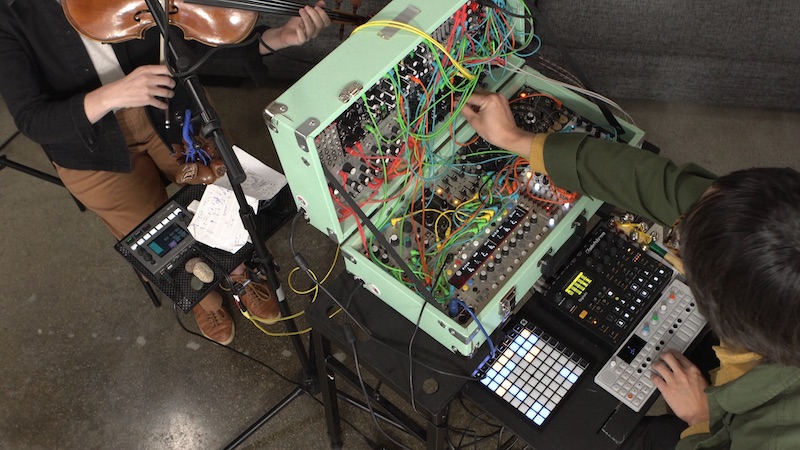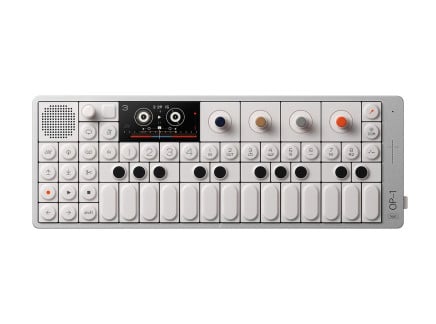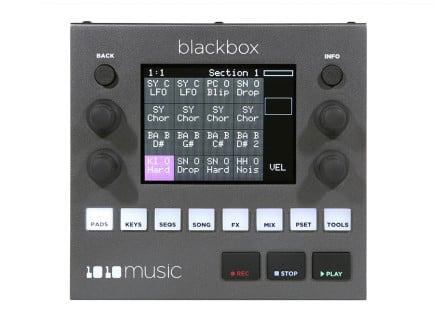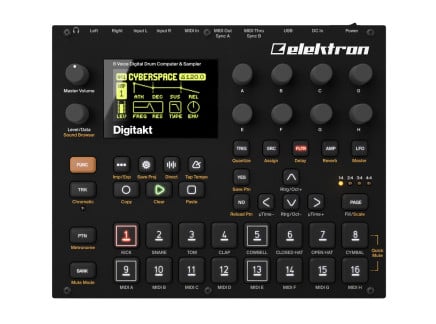To me, electronic music provides seemingly endless inspiration. Part of my fascination has to do with sound itself—after all, I do love the sound of a synthesizer, be it analog, digital, hybrid, or what-have-you. But for me, there's a more fascinating corner of electronic music. Electronic musical instruments make it possible for performers to create any type of musical setup that they want. Sure, you can pull a keyboard synth out of the box and get straight to playing...but once you really get into the weeds, it's possible to craft a setup that works especially well for your personal musical sensibilities. Similarly, it's possible to create a setup that inspires you to make music in a particular way, providing a framework in which you can freely explore with whatever sonic materials inspire you.
Los Angeles-based duo Jeremiah Chiu & Marta Sofia Honer quite clearly embrace this side of music-making, creating a setup that combines live viola, modular synthesis, field recordings, live-multi-track recording, and open-ended improvisation around pre-determined musical ideas. They deeply explore these ideas on recent album Recordings from the Åland Islands, and they recently came by our studio to perform and talk about music. Be sure to check out the video above for an idea of how this can sound, and read on to learn more about their setup.
Recordings from the Åland Islands

In March 2022, Chiu & Honer released Recordings from the Åland Islands: an album assembled from performances and field recordings from two trips to an archipelago in the Baltic Sea. According to their album's liner notes, the Åland Islands, comprised of around 6500 individual islands, is a peculiar, yet serene place: given its latitude, the sun never really sets during the summer, and winters barely see any sunlight at all. Moreover, traveling between the many islands requires trips via ferry, with countless land masses emerging from and dissipating into the distance. This makes for a surreal sense of suspended time—unending days and nights where time seems frozen while space very obviously constantly shifts around you.
Their album quite beautifully captures this feeling, with melodies, field recordings, rhythms, and harmonies emerging from formlessness, orbiting around one another, and drifting into the distance. Sounding something like a hazy dream, the music evokes a sense of vastness and timelessness—occasionally in a way that feels peaceful, occasionally in a way that brings with it a special touch of the sublime.
Again, the album is comprised of field recordings, performance recordings, and various improvisations while on the islands—ranging from location recordings in a 14th century medieval church, improvs with pipe organs and pump organs, voice memos, and everything in-between. You might be curious, then, how such a setup could be translated into live performance; and from our perspective, this is where yet another layer of their artistry becomes quite obvious. Let's dive into their live setup, and talk about some of the decisions they made while building it.
A Hybrid Live Performance / Recording Setup
Chiu & Honer's live setup is designed with a number of purposes in mind: multi-track recording, live processing, and the ability to freely improvise within pre-determined frameworks. Ultimately, this serves two underlying purposes. Firstly, they have created a setup that makes it possible to play music from their album while still leaving room for improvisation. Simultaneously, their setup allows them to multi-track any performance, making it possible to capture the unique magic for later use as samples, or the basis of a new recording altogether.
Much of the setup hinges around the structure of Chiu's Eurorack modular system. This synthesizer performs several roles in their setup—acting as a hub that ties everything else together. Employing the truly general-purpose nature of modular synths to impressive effect, their system acts simultaneously as a series of monophonic synth voices, a performance mixer, a live sampler/effect processor, and a multi-track audio interface.

Each performer also has several instruments which they play, aside from the modular. Honer plays viola, assorted objects, and a 1010 Music Blackbox, triggering field recordings and samples from prior recording sessions. This includes samples of her own viola, making it possible to create large beds of sound not unlike a drifting, hazy, loosely-improvising string section. Chiu's corner features a vintage Yamaha CS 01 synthesizer, a Teenage Engineering OP-1, a Novation Launchpad, and an Elektron Digitakt. These last two items prove to be a hub for much of the modular setup altogether.
The modular system, as mentioned above, was constructed with a particularly interesting design approach. Rather than relying on complex patches with a huge amount of modulation, Chiu's system is itself more like several simple instruments and utility devices. It features several monophonic synth voices under control of the Five12 Vector Sequencer, which in turn is controlled manually via Chiu's Launchpad, and receives clock information from the Digitakt, which often plays its own layers of samples (both sequenced and manually triggered). With its assortment of voices with starkly different character (ranging from the now-discontinued Quadrantid Swarm to Akemie's Castle), this system is something like a small ensemble all its own—intuitively conducted via Chiu's interaction with the Launchpad and Vector Sequencer.
The other key element of this system is its use of the Frap Tools CGM mixing system—a high-quality Eurorack-format mixing system with many of the capabilities of traditional studio consoles or performance mixing boards. All sound sources wind up piping into this mixer...including the outboard synths and even the viola, via Befaco Instrument Interface. By sending all sounds into a single mixer with dedicated aux sends, it becomes possible to use the mixer like a performative effect processor for any given sound. Specifically, Chiu uses the Make Noise Morphagene, Mimeophon, and 4MS Dual Looping Delay to process sounds live—be they sounds originating from the Eurorack system, his own synths, Honer's viola or Blackbox. Each sound source is also connected individually to an Expert Sleepers ES-9 as well, providing the ability to easily multi-track any sound in the system.

Personally, I'm quite stricken by this setup's very general-purpose nature. In my experience, Eurorack-centric live performance setups are usually designed for considerably more singular applications...often requiring specific re-patching during performance, sometimes shifting module selection from performance to performance. But in a way, Chiu has constructed something like a portable recording studio/processing suite. Sure, the device itself is a synthesizer capable of making sound—but it's also an intentionally-designed signal routing, effect processing, and recording tool. This combined with the duo's embrace of instruments outside the system makes it such that, in the course of a performance, they have significant opportunity to improvise and deviate from their plans, feeding off the audience and following the creative impulses that arise in the moment.
And because of their embrace of samples from past recordings, performances, and field recordings, they can maintain the same sense of suspended spacetime felt on their recordings—evoking the sounds and feelings of their record fluidly. In fact, hearing the same sorts of sonic material recontextualized in performance invokes a particularly peculiar sense of suspended time that comes from engaging with memory. Like the record itself, listening to the duo perform is like navigating hazy clouds of seemingly familiar times and spaces...floating past one another unpredictably, yet smoothly and peacefully.










